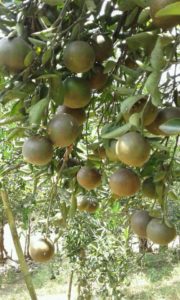KNOW ADVANTAGES AND LIMITATIONS OF GROWING COVER CROPS AND COMPANION CROPS IN A CROPPING SYSTEM.
Cover crops:
Advantages: The advantages of cover crops include protection from soil erosion such as winter rye after corn silage. They add nutrients to the soil when planting legumes such as red clover frost-seeded into winter wheat. Soil structure can be improved as they incorporate organic matter into the soil which may improve soil aggregation. Cover crops also can improve environmental quality by reducing NO3 -leaching after harvest and soil P losses associated with runoff.

Disadvantages: Establishment of cover crops can be cost ineffective. Costs including fuel, labor, machinery, and seed costs plus machinery and/or herbicide costs (tillage or chemical) to kill or remove the cover crop. They may also deplete soil moisture for next year’s crop under dry spring conditions. Allelopathic effects of a rye cover crop may reduce corn stands, especially in reduced tillage systems.
Companion crops
Companion crops were universally used for perennial forage establishment in the past, they are rarely used now. They produce a forage crop for the establishment year, may help to control soil erosion, and may help control weeds. Potential disadvantages include lodging/smothering of the perennial seeding, delaying the establishment of the perennial crop or completely killing it out. If small grain or small grain/field pea mixtures are used, plant before May 1 in southern NY and before May 15 in northern NY. A minimum yield of 1.5 to 2 dry tons/acre is needed to recover establishment costs.
Advantages: Companion crops can reduce soil erosion losses because companion crops (i.e. small grains with alfalfa) grow more rapidly than forages. The companion crop produces a yield during the establishment year of the forage.
Limitation: Companion crops limit herbicide selection. They increase seed costs by adding for a companion crop. Sometimes they can compete for moisture in dry conditions. Harvesting the companion crop, such as barley, can be a challenge if the companion crop is short (barley in a dry year) and the perennial forage gets taller (above it).
